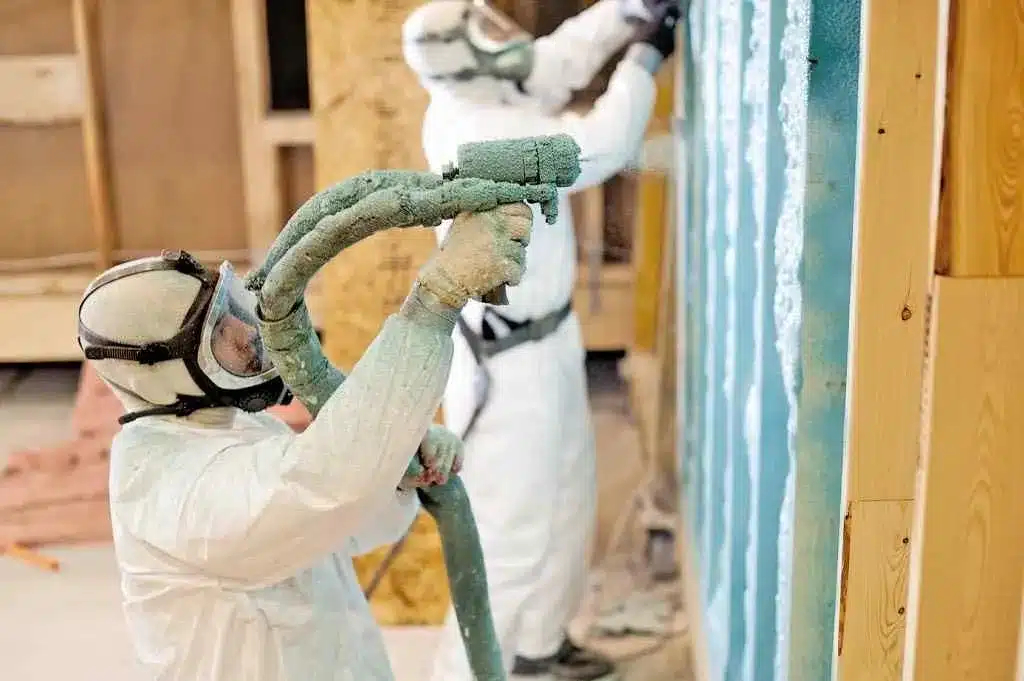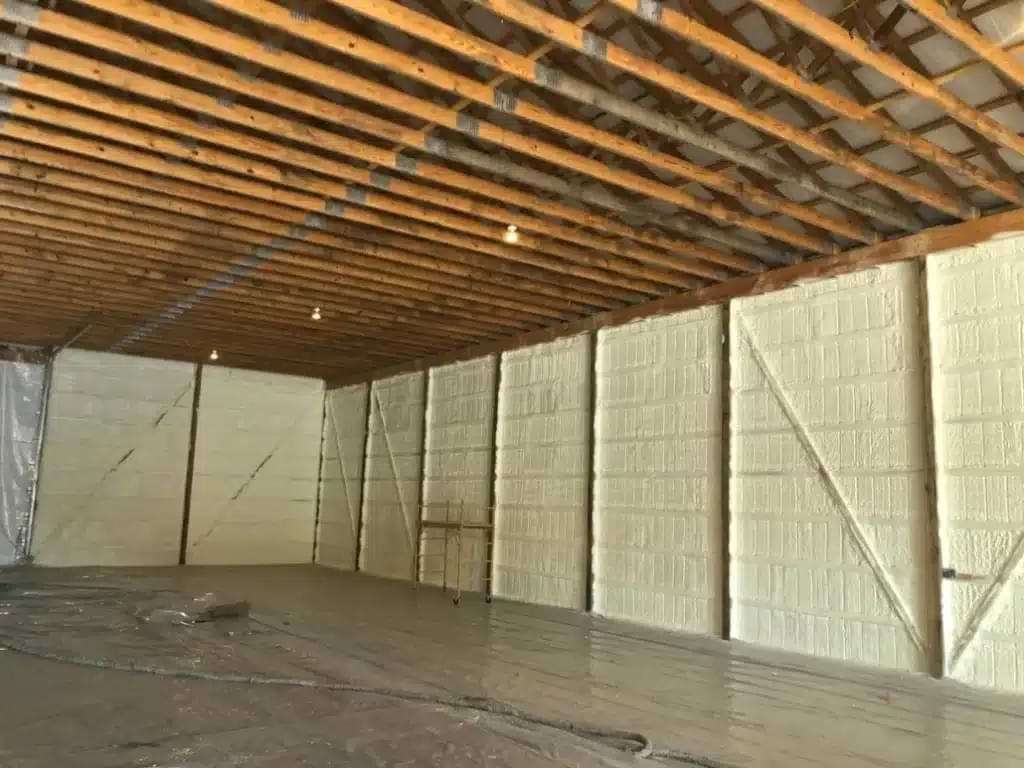In Escambia County’s high-humidity, storm-prone environment, the secret to durable, mold-resistant insulation is closed-cell spray foam. This insulation type offers a dual advantage: high thermal resistance and an air-tight moisture barrier that prevents mold growth and structural decay. Unlike traditional fiberglass or cellulose options, closed-cell spray foam maintains performance during extreme weather and significantly extends a building’s lifespan.
The following guide breaks down how this insulation adapts to regional climate stressors, compares alternative materials, and outlines technical specifications. It is grounded in direct installation experience across residential and commercial structures in Escambia County. The information provided reflects practical outcomes, not marketing claims.
Why Closed-Cell Spray Foam Is Ideal for Escambia County
Local Climate Challenges Require Specialized Insulation
Escambia County faces intense summer heat, frequent rain, and seasonal hurricane threats. These factors create persistent moisture issues in attic spaces, crawl areas, and wall cavities. Closed-cell spray foam insulation in escambia country's acts as a continuous vapor and air barrier, making it resistant to the most common causes of insulation failure: trapped moisture and airflow leakage.
Firsthand Performance Indicators
Field observations show homes insulated with closed-cell foam remain within a ±5°F thermal envelope even during power outages. This insulation doesn't sag, settle, or absorb water, eliminating microbial growth — a major concern in Gulf Coast homes.
Bonus Tip: Install closed-cell spray foam at roof deck level instead of attic floor to maintain dry, temperature-controlled storage or HVAC areas.
Comparison of Insulation Types
Feature | Closed-Cell Spray Foam | Open-Cell Spray Foam | Fiberglass Batts | Blown-In Cellulose |
R-Value per Inch | 6.5–7.0 | 3.5–3.8 | 2.9–3.8 | 3.2–3.7 |
Moisture Resistance | High | Low | Low | Moderate |
Mold Resistance | High | Low | Low | Moderate |
Air Sealing Capability | Excellent | Moderate | Poor | Moderate |
Structural Reinforcement | Yes | No | No | No |
Suitable for High-Humidity Zones | Yes | No | No | Moderate |
Sound Dampening | Moderate | High | Low | High |
Source: U.S. Department of Energy, Building Science Corporation
Technical Specifications and Performance Data
Parameter | Closed-Cell Spray Foam |
R-Value (per inch) | 6.5 – 7.0 |
Water Absorption | <1% |
Air Permeance @ 1” thickness | ≤ 0.02 L/s•m² |
Tensile Strength | >30 psi |
Perm Rating (2” thickness) | <1.0 perm |
Flame Spread Index | ≤ 25 (ASTM E84) |
Service Temperature Range | -40°F to 180°F |
Lifespan | 30–50 years with proper install |
Bonus Tip: For hurricane-prone structures, closed-cell foam adds structural rigidity — acting like a glue between sheathing and studs, which can increase racking strength by up to 300% (per FEMA testing data).
Market Insights and Authoritative Sources
- 78% of building failures in humid zones are linked to moisture management issues. (Building Science Corporation)
- Closed-cell spray foam is one of the few insulation types FEMA classifies as flood-resistant material. (FEMA Technical Bulletin 2)
- A study from Oak Ridge National Laboratory confirms up to 40% energy loss in homes is due to air leaks that closed-cell foam can eliminate.
These facts reinforce that for Escambia’s coastal setting, insulation must do more than insulate — it must protect.
Things to Consider Before Making a Decision
- Climate Suitability: Choose materials specifically tested for performance in high humidity and hurricane-prone zones.
- Building Type: Closed-cell is ideal for coastal homes, metal buildings, and older structures needing reinforcement.
- Installation Access: Spray foam requires trained professionals and specific equipment. Not suitable for all retrofit scenarios.
- Budget vs. Lifespan: Higher upfront cost, but longer lifespan and reduced HVAC load offsets initial spend.
- Ventilation Planning: Air-tight systems need mechanical ventilation planning to manage indoor air quality.
Bonus Tip: Before deciding, conduct a blower door test to evaluate current air leakage. This helps estimate ROI from upgraded insulation.
Common Questions About Mold-Resistant Insulation
Which insulation resists mold best in coastal climates?
Closed-cell spray foam. It doesn't absorb water and seals out air, denying mold the moisture and oxygen it needs.
Does spray foam insulation stop hurricane wind intrusion?
While it doesn't prevent storms, it improves structural integrity and seals wind entry points, reducing uplift risks.
Can insulation be applied directly to metal or concrete?
Yes. Closed-cell spray foam adheres directly to wood, masonry, and metal without fasteners or barriers.
How fast can insulation become compromised in humid environments?
Fiberglass or cellulose can degrade within 6 months if exposed to constant humidity. Closed-cell foam shows no degradation in over a decade under similar conditions.
Essential Services for Humid Climate Insulation
Spray Foam Insulation
High-performance solution offering moisture control, air sealing, and structural support — ideal for coastal homes and buildings.
Blown-In Insulation
Cost-effective retrofit option for attics and walls, particularly in homes with less moisture exposure.
Fiberglass Insulation
Traditional batts suited for dry zones or short-term retrofits where budget is limited.
Roof Insulation
Applied under roof decks to protect attics from heat gain and moisture infiltration.
Insulation Removal
Safely removes old or water-damaged insulation before new installation to prevent mold recurrence.
Commercial Insulation
Custom-designed for moisture-vulnerable buildings like retail spaces, warehouses, or food storage.
Residential Insulation
Whole-home strategies tailored for crawlspaces, walls, attics, and garages, with humidity-specific products.
FAQ
How often should insulation be inspected in coastal homes?
Every 2–3 years. Look for signs of moisture, mold, or compaction — especially after major weather events.
Can insulation improve air quality?
Yes. Air-sealing foam insulation reduces pollen, dust, and mold spore infiltration.
Is closed-cell spray foam safe after installation?
Once cured (typically within 24 hours), it is inert, odorless, and safe for occupancy.
Does mold grow under spray foam?
If installed properly over clean, dry surfaces, mold cannot grow underneath because foam blocks both air and moisture.
What’s the best way to extend insulation life?
Ensure proper ventilation and address leaks early. For spray foam, minimal maintenance is needed beyond visual inspection.
Ready to Achieve Long-Term Moisture and Energy Control?
Apply these insights now: Schedule your insulation strategy review with Prestige Insulation Solutions LLC and ensure your property stands resilient against Escambia’s climate.
Contact
Prestige Insulation Solutions
? (850) 429-4969
? [email protected]
Reviewer:
With over 13 years in spray foam insulation, Benjamin Lee reviewed this content and offered feedback aimed at helping growing businesses connect with local homeowners and commercial clients more effectively.





